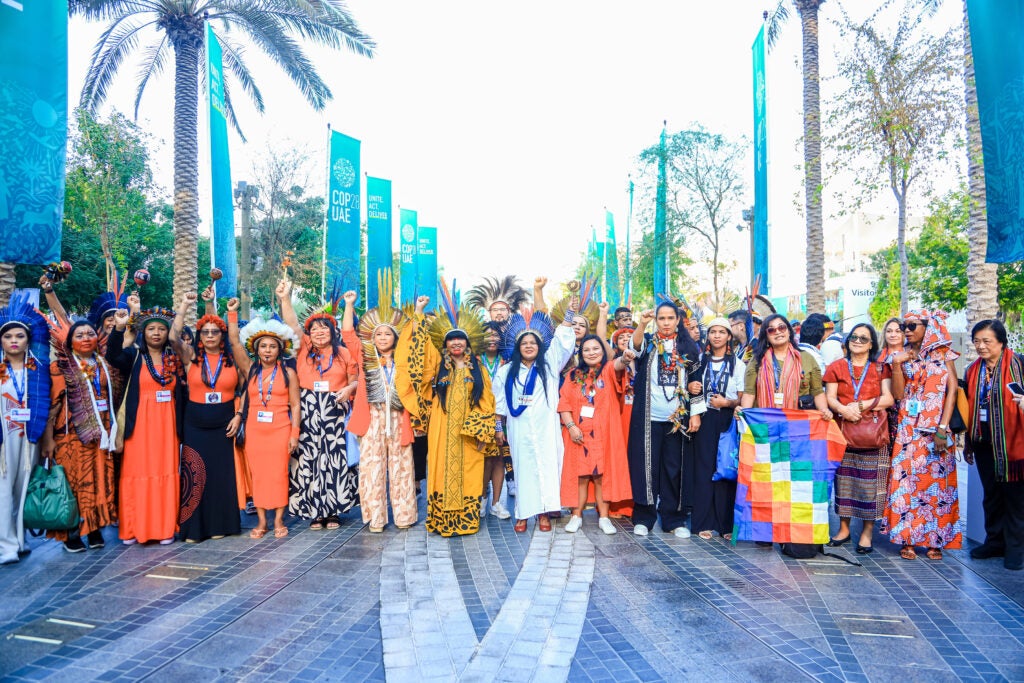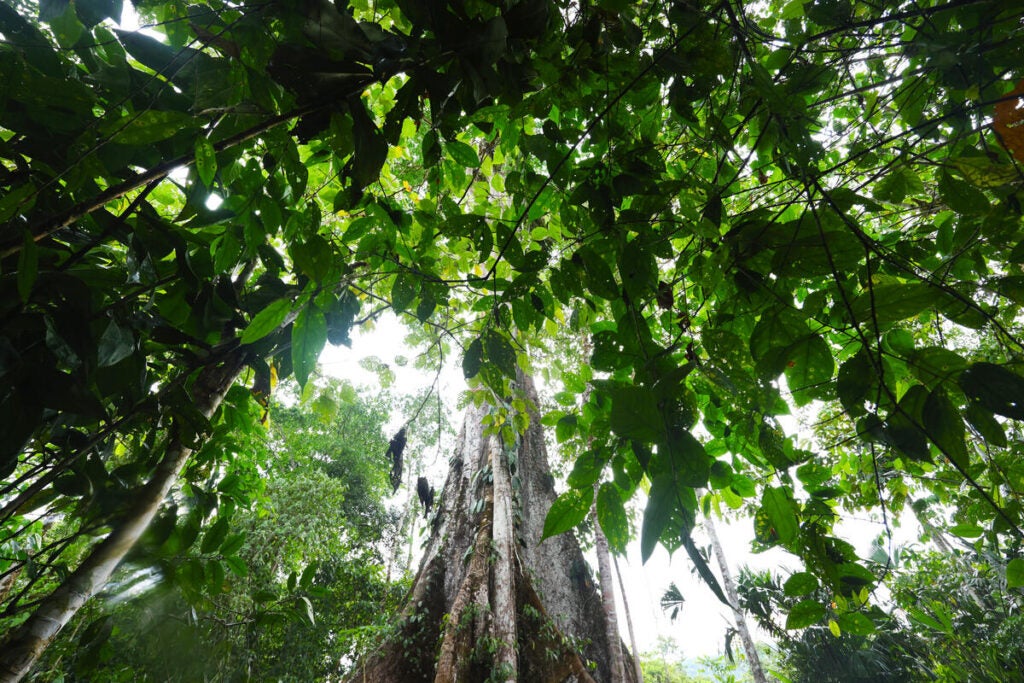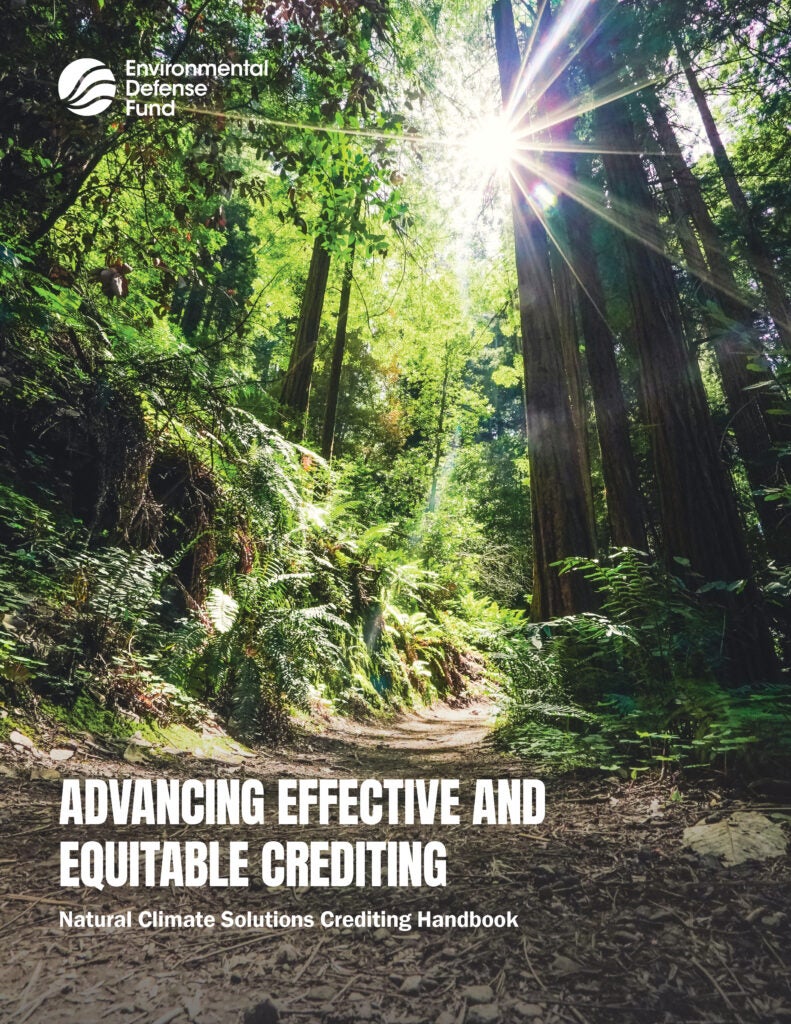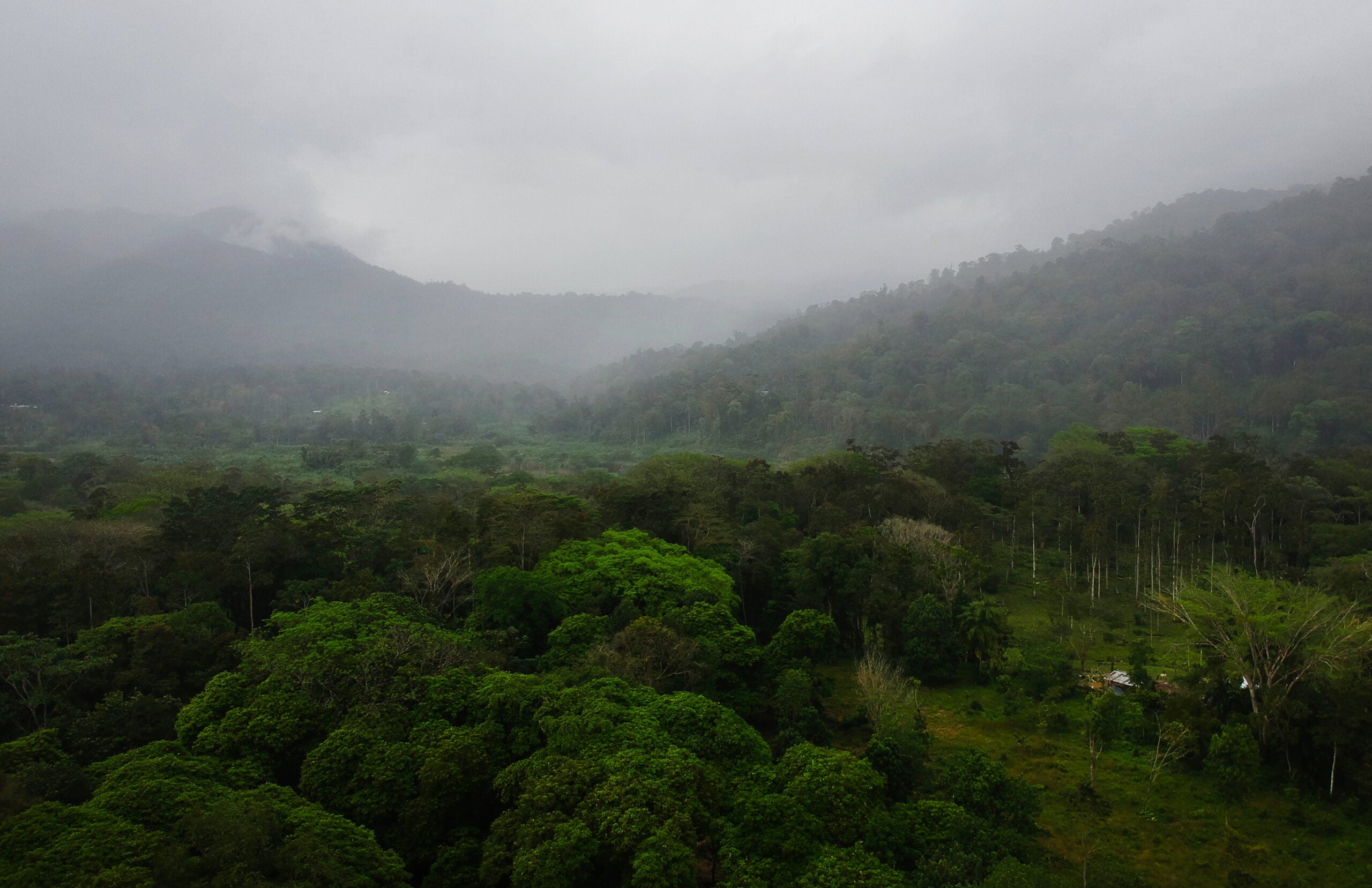
Sonia Guajarara, Minister of Indigenous Peoples of Brazil, leads a march at COP28 in Dubai, UAE.
Photo: Estevam Rafael / Audiovisual / PR / Palácio do Planalto via Flickr
This post is written by Santiago García Lloré, Senior Manager of IPLC and Conservation Partnerships at EDF.
In the coming days, major international events like New York Climate Week, the COP for the Convention on Biological Diversity (CBD) in Cali, and the UN Climate Change Conference (COP) in Baku will gather world leaders to discuss solutions to the climate and biodiversity crises. Once again, there will be calls to include Indigenous Peoples and Local Communities (IPLCs) in these discussions. This recognition is not just about their crucial role as stewards of forests and biodiversity; it’s about understanding that real, sustainable solutions won’t be possible without their voices at the table.
Despite all their efforts, it remains extremely difficult for IPLCs to participate meaningfully in these events. Even though Indigenous and local community leaders strive to be present and contribute to global discussions, their journey to these forums is fraught with challenges. At COP27 in Egypt, around 300 Indigenous representatives attended, and approximately a similar number attended at COP28 in Dubai. However, the impact of their presence is often limited because of the many barriers they must overcome. These obstacles make it incredibly hard for Indigenous voices to be fully heard and valued despite their significant efforts to be part of these critical conversations.














